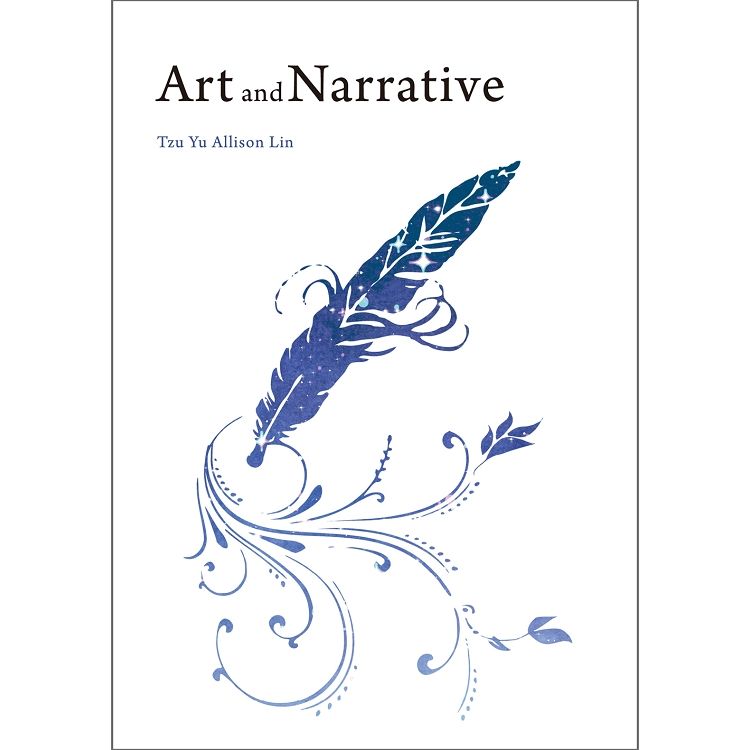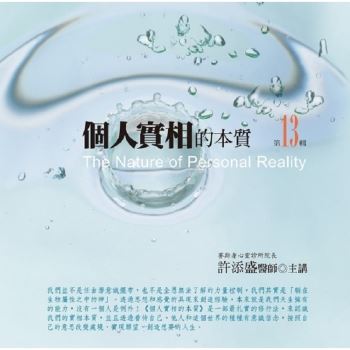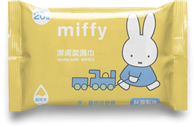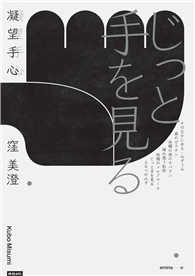This book aims to be a guidance, showing a way of reading a literary text not only verbally but also visually. Through artistic terms and movements, the readers can see that a literary text can be enjoyed not only through the black words on the whitepapers. A solid and profound understanding of the visual arts can especially remind us how different and also, how difficult, when it comes to read a verbal painting.
For scholars, students, and also for people who are interested in the mutual development of visual and verbal narrative forms, this book is also innovative.
本書特色
"This book offers many literary occasions for thinking about the challenging and ever changing connections and disconnections of truth and beauty in their times and in their texts."
──Professor Rachel Bowlby, UCL
名人推薦
Rachel Bowlby(Professor of Comparative Literature,University College London)
| FindBook |
有 3 項符合
Art and Narrative的圖書 |
| 圖書選購 |
| 型式 | 價格 | 供應商 | 所屬目錄 | $ 150 |
中文書 |
$ 176 |
世界文學總論 |
$ 180 |
藝術設計 |
|---|
| 圖書館借閱 |
| 國家圖書館 | 全國圖書書目資訊網 | 國立公共資訊圖書館 | 電子書服務平台 | MetaCat 跨館整合查詢 |
| 臺北市立圖書館 | 新北市立圖書館 | 基隆市公共圖書館 | 桃園市立圖書館 | 新竹縣公共圖書館 |
| 苗栗縣立圖書館 | 臺中市立圖書館 | 彰化縣公共圖書館 | 南投縣文化局 | 雲林縣公共圖書館 |
| 嘉義縣圖書館 | 臺南市立圖書館 | 高雄市立圖書館 | 屏東縣公共圖書館 | 宜蘭縣公共圖書館 |
| 花蓮縣文化局 | 臺東縣文化處 |
|
|
圖書介紹 - 資料來源:博客來 評分:
圖書名稱:Art and Narrative
內容簡介
作者介紹
作者簡介
林孜郁(Tzu Yu Allison Lin)
Dr Tzu Yu Allison Lin received her PhD in English and Comparative Literature, Goldsmiths, University of London. She teaches at Faculty of Education, Gaziantep University, Turkey. Dr Lin is the co-editor and the reviewer of several international journals. Her publications are journal articles and books, including London Poetics (Taipei: Showwe, 2016). Dr Lin is currently working on a new book with several colleagues, which is about education in perspectives of cultural studies.
林孜郁(Tzu Yu Allison Lin)
Dr Tzu Yu Allison Lin received her PhD in English and Comparative Literature, Goldsmiths, University of London. She teaches at Faculty of Education, Gaziantep University, Turkey. Dr Lin is the co-editor and the reviewer of several international journals. Her publications are journal articles and books, including London Poetics (Taipei: Showwe, 2016). Dr Lin is currently working on a new book with several colleagues, which is about education in perspectives of cultural studies.
目錄
Acknowledgements
Preface
Chapter 1 ◆ Surrealism
Chapter 2 ◆ Impressionism
Chapter 3 ◆ Realism
Chapter 4 ◆ Symbolism
Appendix
Preface
Chapter 1 ◆ Surrealism
Chapter 2 ◆ Impressionism
Chapter 3 ◆ Realism
Chapter 4 ◆ Symbolism
Appendix
序
Acknowledgements
I would like to thank Mr Michael Song, the President of Showwe Publisher, Taipei. Without his encouragement and strong support, it would be impossible to have this book published. I also want to thank Cecilia Hsu. As the Chief Editor, Ms Hsu gave many important and professional suggestions during the process of my writing.
This book aims to be a guidance, showing a way of reading a literary text not only verbally but also visually. Through artistic terms and movements, the readers can see that a literary text can be enjoyed not only through the black words on the white papers. A solid and profound understanding of the visual arts can especially remind us how different and also, how difficult, when it comes to read a verbal painting.
For scholars, students, and also for people who are interested in the mutual development of visual and verbal narrative forms, this book is also innovative. Through crossing the boundry, I sincerely hope that this research can make the readers to think about some fundamental questions such as ‘what is art’, and ‘what is literature’, as these questions can always inspire, and yet, challenge us.
Preface
John Keats’s famous poem, ‘Ode on a Grecian Urn’, published in 1820, explores the suspension of ordinary time. It does this in two ways in particular. On the one hand, the scenes depicted on the ancient vessel, and described in the poem, remain paused at the same points in the narratives that they suggest. Youthful desire is not fulfilled (but at the same time it is never thwarted, and it is never over). On the other hand, the vase itself remains as a real representative of an aesthetically prized culture from long ago. It is a solid object; it stands for ancient Greece. It always has done, and it always will.
Allison Lin’s engaging and delicately detailed little book is also preoccupied with doubled images: especially those that, like Keats’s poem, play on contrasts of loss and desire, of timelessness and temporal movement. In a certain way, Keats’s poem—which lies outside Lin’s book—could be said to form a template from which some later representations appear to take their different bearings; these differences then show up features that seem to be lacking, or at least not present, in the earlier work. I am thinking in particular of one of the poems that Lin cites in full, with a subsequent commentary: Richard Aldington’s ‘Eros and Psyche’. In this poem there are two statues seen in the suburb of Camden Town. One is of ‘Cobden’, in commemoration of a nineteenth-century political figure, and the other, ‘Eros and Psyche’, alludes to ancient Greek culture in the same way as Keats’s urn. The Greek statue is already relativised by its sharing of place with the representative of a particular moment in public history (but a moment that by now—by the time of the poem—has been more or less forgotten, since the speaker can’t remember who Cobden was). Both are statues; neither has priority, is seen alone. This then draws attention to an artificial isolation of the urn in Keats. Although in reality urns like the one the poem describes were carefully preserved and displayed in museums—inclouding London’s British Museum, in the same city as the statues of Aldington’s poem—that present-day situation, distant from its historical and geographical origins, is not a part of the ‘Ode’.
In other ways too, Aldington draws attention to a different type of contrast from those that are shown by Keats. The statue of Eros and Psyche has suffered from the disfiguring effects of real time and real-world exposure. It is dirty, ‘grimy’, and so is the surrounding atmosphere. In Camden Town the pair of gods is out of place. The poem describes the tranquil, mythical setting which should be theirs instead. That is to say, it depicts a scene which is shown as positive in value (this is where the lovers ought to be, not here on this ugly street) but is also, in the negative, a picture of what is not, is absent from the scene that the spectator observes.
The sense of disjunction in ‘Eros and Psyche’ is also explored through the situation of the speaker. Keats’s poet, addressing a ‘thou’ with familiarity, is not situated in any specific place or time. But Aldington’s is sitting on top of a double-decker bus; it is from this elevated but realistic vantage point, passing through the present day, that he sees the two artworks—and the other components of the local sights, its ‘square of ugly sordid’ shops’ and its underground station.
Aldington might seem at first sight, in a Victorian way, to be making a conventional kind of contrast between the beauties of classical civilisation and the sordid realities of the modern world; but that is not the case. Near the end of the poem, having drawn at length the picture of the perfect mythical place from which the present Eros and Psyche are separated, the speaker turns to one more world, this time the real conditions in which the statue would have been created. In this description, it is ‘the limbs that a Greek slave cut / In some old Italian town’.
Jane Austen’s novel Pride and Prejudice, another of the texts that Lin dissects, was published a few years before Keats’s ‘Ode’. It comes from the same country, and the same period, but generically it lays out somewhat different markers of its literary world. Lin is interested in the novel’s analysis of different perceptions of reality—beginning, in many senses of that word, with the novel’s opening sentence which ironically sets up a ‘truth’ that is ‘universally acknowledged’. In its questionable determinacy, this has something in common, thematically too, with the enigmatically categorical declaration at the end of Keats’s poem, that ‘Beauty is truth, truth beauty - that is all / Ye know on earth, and all ye need to know.’
Lin’s own preferred version of realism leads her to focus on the portrait of Mr Darcy that hangs in Pemberley, his ancestral home. When Elizabeth Bennet is shown this image by an affectionate housekeeper, her previously negative judgement of the man is seriously modified for the better: from now on she starts to see him, like his lovely home, as a possible object of love. And indeed this more benign picture—this picture— is what the novel’s narrator, along with Elizabeth herself, will endorse as correct, as distinct from the more negative images of Darcy that have been visible up to this point. It’s a nice example of realism for Lin to choose, given the pathway of her own book, which moves through the largely visual modes of imagism (or surrealism) and impressionism, and ends with symbolism. Lin’s realism, in this instance, is not reality but a painting—a painting, that is, which is represented in a novel’s description of it in words. It is through such pictures, such artistic representations, that real lives are lived—in all their poignant divisions and rapprochements: between a here and an elsewhere, or between here and then and always. Art and Narrative offers many literary occasions for thinking about the challenging and ever changing connections and disconnections of truth and beauty in their times and in their texts.
I would like to thank Mr Michael Song, the President of Showwe Publisher, Taipei. Without his encouragement and strong support, it would be impossible to have this book published. I also want to thank Cecilia Hsu. As the Chief Editor, Ms Hsu gave many important and professional suggestions during the process of my writing.
This book aims to be a guidance, showing a way of reading a literary text not only verbally but also visually. Through artistic terms and movements, the readers can see that a literary text can be enjoyed not only through the black words on the white papers. A solid and profound understanding of the visual arts can especially remind us how different and also, how difficult, when it comes to read a verbal painting.
For scholars, students, and also for people who are interested in the mutual development of visual and verbal narrative forms, this book is also innovative. Through crossing the boundry, I sincerely hope that this research can make the readers to think about some fundamental questions such as ‘what is art’, and ‘what is literature’, as these questions can always inspire, and yet, challenge us.
Allison Lin
Faculty of Education
Gaziantep University
2019
Faculty of Education
Gaziantep University
2019
Preface
John Keats’s famous poem, ‘Ode on a Grecian Urn’, published in 1820, explores the suspension of ordinary time. It does this in two ways in particular. On the one hand, the scenes depicted on the ancient vessel, and described in the poem, remain paused at the same points in the narratives that they suggest. Youthful desire is not fulfilled (but at the same time it is never thwarted, and it is never over). On the other hand, the vase itself remains as a real representative of an aesthetically prized culture from long ago. It is a solid object; it stands for ancient Greece. It always has done, and it always will.
Allison Lin’s engaging and delicately detailed little book is also preoccupied with doubled images: especially those that, like Keats’s poem, play on contrasts of loss and desire, of timelessness and temporal movement. In a certain way, Keats’s poem—which lies outside Lin’s book—could be said to form a template from which some later representations appear to take their different bearings; these differences then show up features that seem to be lacking, or at least not present, in the earlier work. I am thinking in particular of one of the poems that Lin cites in full, with a subsequent commentary: Richard Aldington’s ‘Eros and Psyche’. In this poem there are two statues seen in the suburb of Camden Town. One is of ‘Cobden’, in commemoration of a nineteenth-century political figure, and the other, ‘Eros and Psyche’, alludes to ancient Greek culture in the same way as Keats’s urn. The Greek statue is already relativised by its sharing of place with the representative of a particular moment in public history (but a moment that by now—by the time of the poem—has been more or less forgotten, since the speaker can’t remember who Cobden was). Both are statues; neither has priority, is seen alone. This then draws attention to an artificial isolation of the urn in Keats. Although in reality urns like the one the poem describes were carefully preserved and displayed in museums—inclouding London’s British Museum, in the same city as the statues of Aldington’s poem—that present-day situation, distant from its historical and geographical origins, is not a part of the ‘Ode’.
In other ways too, Aldington draws attention to a different type of contrast from those that are shown by Keats. The statue of Eros and Psyche has suffered from the disfiguring effects of real time and real-world exposure. It is dirty, ‘grimy’, and so is the surrounding atmosphere. In Camden Town the pair of gods is out of place. The poem describes the tranquil, mythical setting which should be theirs instead. That is to say, it depicts a scene which is shown as positive in value (this is where the lovers ought to be, not here on this ugly street) but is also, in the negative, a picture of what is not, is absent from the scene that the spectator observes.
The sense of disjunction in ‘Eros and Psyche’ is also explored through the situation of the speaker. Keats’s poet, addressing a ‘thou’ with familiarity, is not situated in any specific place or time. But Aldington’s is sitting on top of a double-decker bus; it is from this elevated but realistic vantage point, passing through the present day, that he sees the two artworks—and the other components of the local sights, its ‘square of ugly sordid’ shops’ and its underground station.
Aldington might seem at first sight, in a Victorian way, to be making a conventional kind of contrast between the beauties of classical civilisation and the sordid realities of the modern world; but that is not the case. Near the end of the poem, having drawn at length the picture of the perfect mythical place from which the present Eros and Psyche are separated, the speaker turns to one more world, this time the real conditions in which the statue would have been created. In this description, it is ‘the limbs that a Greek slave cut / In some old Italian town’.
Jane Austen’s novel Pride and Prejudice, another of the texts that Lin dissects, was published a few years before Keats’s ‘Ode’. It comes from the same country, and the same period, but generically it lays out somewhat different markers of its literary world. Lin is interested in the novel’s analysis of different perceptions of reality—beginning, in many senses of that word, with the novel’s opening sentence which ironically sets up a ‘truth’ that is ‘universally acknowledged’. In its questionable determinacy, this has something in common, thematically too, with the enigmatically categorical declaration at the end of Keats’s poem, that ‘Beauty is truth, truth beauty - that is all / Ye know on earth, and all ye need to know.’
Lin’s own preferred version of realism leads her to focus on the portrait of Mr Darcy that hangs in Pemberley, his ancestral home. When Elizabeth Bennet is shown this image by an affectionate housekeeper, her previously negative judgement of the man is seriously modified for the better: from now on she starts to see him, like his lovely home, as a possible object of love. And indeed this more benign picture—this picture— is what the novel’s narrator, along with Elizabeth herself, will endorse as correct, as distinct from the more negative images of Darcy that have been visible up to this point. It’s a nice example of realism for Lin to choose, given the pathway of her own book, which moves through the largely visual modes of imagism (or surrealism) and impressionism, and ends with symbolism. Lin’s realism, in this instance, is not reality but a painting—a painting, that is, which is represented in a novel’s description of it in words. It is through such pictures, such artistic representations, that real lives are lived—in all their poignant divisions and rapprochements: between a here and an elsewhere, or between here and then and always. Art and Narrative offers many literary occasions for thinking about the challenging and ever changing connections and disconnections of truth and beauty in their times and in their texts.
16 May, 2019
Rachel Bowlby
Professor of Comparative Literature,
University College London
Author, most recently,
of Talking Walking and Everyday Stories
Rachel Bowlby
Professor of Comparative Literature,
University College London
Author, most recently,
of Talking Walking and Everyday Stories
Art and Narrative 相關搜尋
走進宋畫,10-13世紀的中國文藝復興(南宋篇):在江南煙雨微茫中若隱若現,越過唐人直奔魏晉的宋人美學I NEED ART:關於我,Henn Kim的成年記述
傳承與開創,從臺灣到亞太—亞洲作曲家聯盟口述史訪談集(國際版)
神聖黑色的魔力:徹底改變人類文明、藝術、歷史的黑色故事
說故事的古典音樂導聆【古典樂派】:鋼琴家帶你入門200首名曲,聽懂巴哈到貝多芬的光明與黑暗
人像繪畫聖經:從不像畫到像,再打破框架!幫你練好基礎、開創風格的人像技法全書 ( 素描 / 插畫 / 電繪全適用)
現代藝術的拓路人:塞尚
韓秀帶你認識西洋藝術家(卡拉瓦喬、埃爾‧格雷考、杜勒、李奧納多‧達‧文西、林布蘭、塞尚)
走進宋畫,10-13世紀的中國文藝復興(北宋篇):建立在皇家畫院以外,由士人畫以至於文人畫擔待起來的北宋繪畫藝術
一出手就是名場面:從《樂來越愛你》到《寄生上流》,11大類型片背後的影像拍攝密技&布局手法
|












